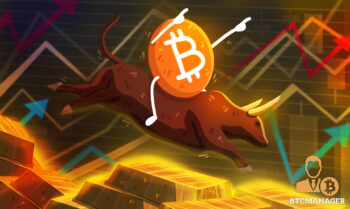
2024-11-21 20:57 |
Wall Street is gearing up for a potential resurgence of inflation as President Donald Trump prepares for his second term, backed by Republican control of Congress.
Investors face a complex landscape of rising inflation expectations, soaring stocks, and uncertainties tied to Trump’s policy agenda, including taxes, tariffs, and immigration.
Rising long-term bond yields suggest that markets are pricing in a growing economy under Trump but also anticipating a larger US debt load, elevated Treasury issuance, and inflationary pressures.
Even so, Treasury Inflation-Protected Securities (TIPS), once heralded as a hedge against inflation, appear to have fallen out of favor.
Despite metrics pointing to inflation risks, TIPS remain unpopular among investors, reflecting lingering skepticism from past losses during periods of rising interest rates
In a real-time gauge of TIPS demand, the Treasury plans to auction $17 billion in securities maturing in 10 years on Thursday.
This issuance will serve as a litmus test for whether investors are ready to reembrace TIPS in the face of renewed inflation risks.
TIPS: A shadow of their promiseIntroduced in the 1990s, TIPS were designed to help investors navigate inflation.
However, their performance during the Federal Reserve’s historic rate hikes exposed vulnerabilities, particularly for longer-duration bonds.
The 2022 bond market rout left TIPS holders facing steep losses, souring investor sentiment.
The rapid ascent of real rates from negative territory crushed TIPS prices, leading to a mass exodus from the asset class.
Investors remain reluctant to revisit TIPS despite persistent inflation risks.
Rodney Sullivan, executive director of the Mayo Center for Asset Management at the University of Virginia, noted in a MarketWatch report that many investors haven’t returned to TIPS since the 2022 sell-off.
“Inflation doesn’t yet look defeated,” he said, but investor confidence in TIPS has been shaken.
Despite their initial appeal, TIPS faces structural challenges. Thin trading volumes make them susceptible to volatility, said Will Compernolle, macro strategist at FHN Financial in the report.
He noted that small shifts in market flows can cause outsized changes in TIPS yields, further complicating their appeal.
New TIPS issuances can also distort market readings. “The big drop on Aug. 3 was because it was the first business day after the new 10-year TIPS auction was settled, not because people radically changed their estimates of inflation over the next 10 years,” Compernolle explained.
These nuances, coupled with rising benchmark Treasury yields and mortgage rates nearing 7%, reflect broader inflation concerns, even as TIPS remain underutilized.
Are stocks the new hedge against inflation?While TIPS have lost their luster, equities are emerging as an alternative hedge.
The S&P 500 has risen 24% year-to-date, with smaller gains in the Dow and the Russell 2000.
Nasdaq’s 26% climb underscores robust tech-sector performance, further bolstered by consumer spending resilience.
“Stocks have been working well recently as a hedge,” Kourkafas noted. “What is needed for inflation protection is having assets that can match the pace of inflation.”
This trend reflects a shift in investor strategies, with market participants favoring equities over bonds.
Even as the Federal Reserve signals caution, market enthusiasm remains strong, driven by expectations of growth-friendly policies under Trump’s leadership.
How real are the inflation fears?Rising long-term bond yields suggest that markets are pricing in a growing economy under Trump but also anticipating a larger US debt load, elevated Treasury issuance, and inflationary pressures.
Tom Barkin, president of the Richmond Fed, told the Financial Times that the US was vulnerable to inflation shocks.
He said businesses were “concerned” about the inflationary effects of the sweeping tariffs and plans to deport illegal immigrants that Trump touted on the campaign trail.
“I can see why the businesses think that,” Barkin said, but he noted that other Trump policies related to boosting domestic energy production “might be disinflationary”.
The Federal Reserve has taken a cautious stance. October’s consumer-price index revealed an uptick in inflation to 2.6% annually, the first increase in seven months.
Fed Chair Jerome Powell reassured markets by indicating he would not resign if asked by Trump, adding stability to monetary policy discussions.
Powell expects inflation to remain around 2% to 3% next year, allowing for modest rate cuts.
“Inflation is a risk,” said Angelo Kourkafas, senior investment strategist at Edward Jones.
“But not to the extent as in the last three years.” Kourkafas pointed to corporate pricing power as a hedge, with businesses passing higher costs onto consumers, bolstering stocks as an inflation-resistant asset.
The post Inflation fears grip Wall Street, but TIPS struggle to attract investors – here's why appeared first on Invezz
origin »TrumpCoin (TRUMP) на Currencies.ru
|
|



























